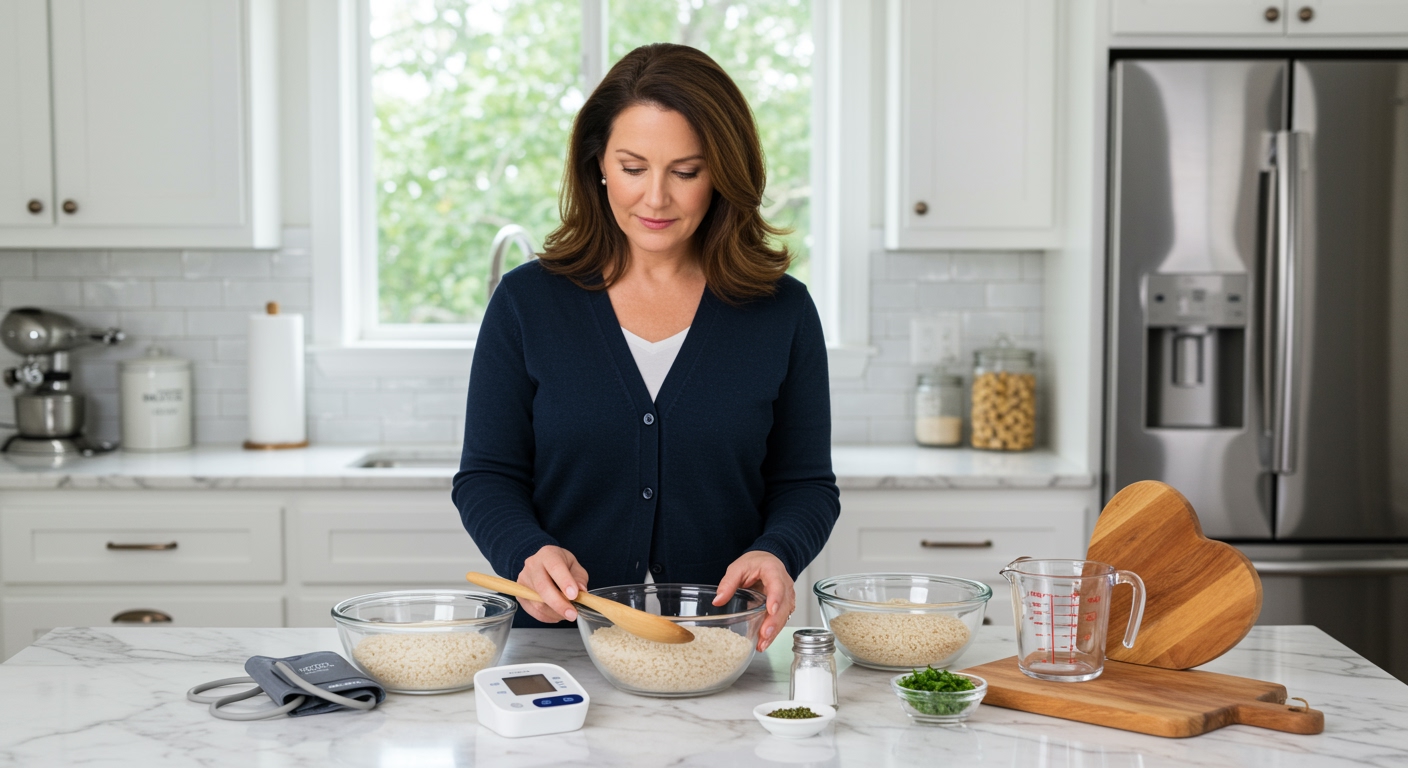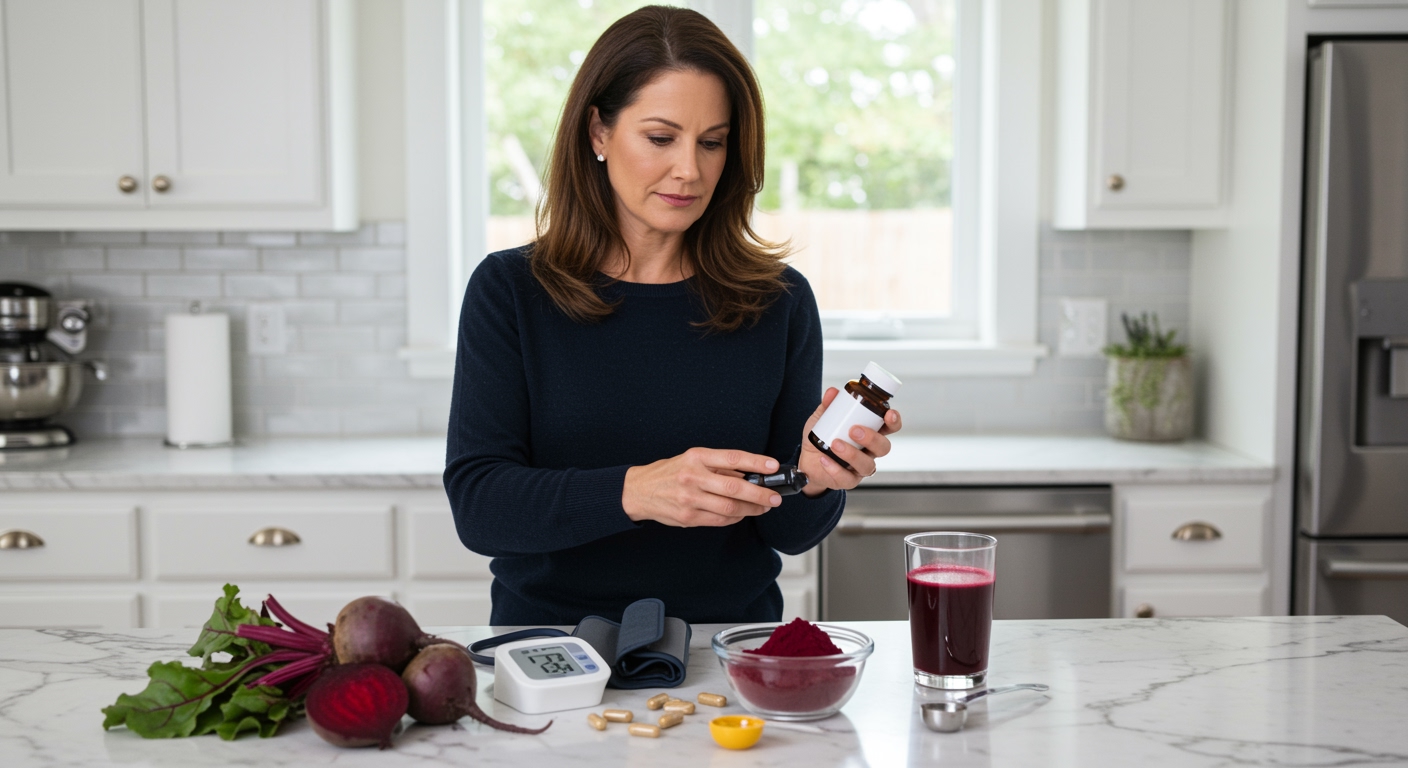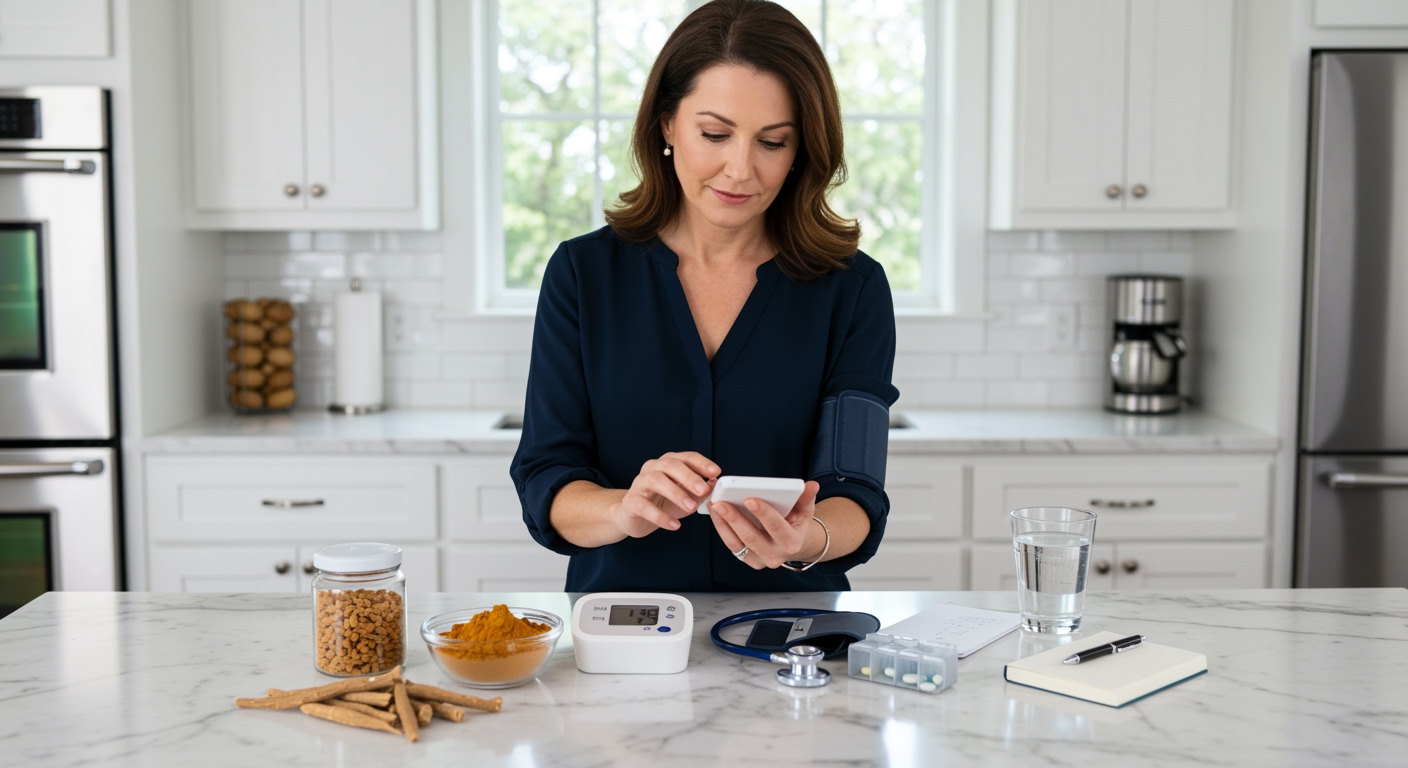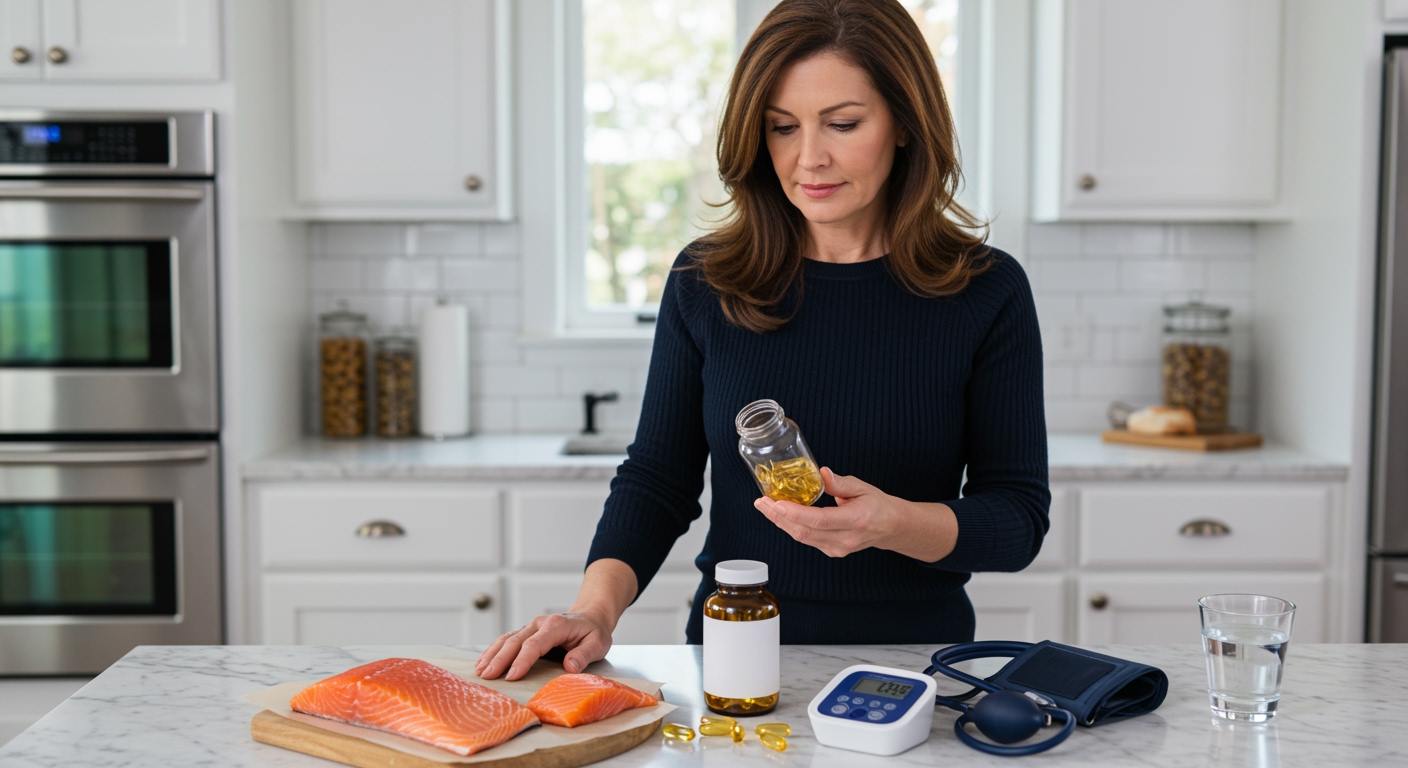✪ Key Takeaway: Hypertensive patients don’t need to avoid rice completely but should choose brown rice over white rice and control portions.
Introduction
Your doctor just told you that you have high blood pressure and now you are wondering if you need to give up rice forever.
This question haunts millions of people worldwide because rice feeds nearly half the global population and forms the backbone of countless traditional diets.
Hi, I’m Abdur, your nutrition coach and today I’m going to explain exactly how rice affects blood pressure and what smart choices you can make to keep enjoying this staple food safely.
Does Rice Actually Raise Blood Pressure?
The relationship between rice and blood pressure is more complex than most people realize.
White rice can contribute to blood pressure problems through several mechanisms that work against your cardiovascular health.
When you eat white rice, your blood sugar spikes rapidly because the refining process removes the fiber and nutrients that would normally slow digestion.
These blood sugar spikes trigger insulin release, and chronically high insulin levels can lead to sodium retention in your kidneys.
Your body holds onto more sodium when insulin levels stay elevated, and excess sodium directly increases blood volume and pressure against your artery walls.
Research shows that people who eat more refined grains like white rice have higher rates of hypertension compared to those who choose whole grains.
However, the story changes dramatically when you consider brown rice and other whole grain varieties that retain their natural fiber and nutrients.
✪ Fact: White rice has a glycemic index of 73 while brown rice scores only 68, making it a better choice for blood sugar control.
Which Type of Rice Should You Choose?
Not all rice varieties affect your blood pressure in the same way.
Brown rice emerges as the clear winner for people managing hypertension because it contains the complete grain with its fiber-rich bran layer intact.
The fiber in brown rice slows down digestion and prevents the rapid blood sugar spikes that can worsen blood pressure over time.
Brown rice also contains magnesium, a mineral that helps relax blood vessel walls and supports healthy blood pressure levels.
Wild rice and black rice offer even more benefits because they contain higher levels of antioxidants called anthocyanins that protect your cardiovascular system.
Red rice provides similar advantages with additional compounds that may help improve insulin sensitivity and reduce inflammation in your blood vessels.
If you must eat white rice occasionally, choose parboiled rice which retains more nutrients than regular white rice due to its special processing method.
✪ Pro Tip: Soak brown rice for 30 minutes before cooking to reduce cooking time and improve digestibility.
How Much Rice Can You Safely Eat?
Portion control becomes crucial when you have high blood pressure and want to include rice in your diet.
A safe serving size for most hypertensive patients is half a cup of cooked rice, which equals about one-quarter cup of dry rice before cooking.
This portion provides approximately 110 calories and 23 grams of carbohydrates, which fits well within a heart-healthy eating plan.
You can safely eat this amount once daily as part of a balanced meal that includes plenty of vegetables and lean protein.
The key lies in what you eat alongside your rice because combining it with fiber-rich vegetables and healthy fats slows down digestion even further.
Many people make the mistake of eating rice as their main dish, but it should occupy only one-quarter of your plate space.
Fill half your plate with non-starchy vegetables, one-quarter with lean protein, and the remaining quarter with your rice portion for optimal blood pressure management.
✪ Note: Use your closed fist as a guide for proper rice portion size at each meal.
What Cooking Methods Work Best?
How you prepare your rice can significantly impact its effect on your blood pressure.
Cooking rice with minimal salt or no salt at all becomes essential because excess sodium directly raises blood pressure in sensitive individuals.
Instead of salt, flavor your rice with herbs like cilantro, parsley, or basil, and spices such as turmeric, cumin, or garlic powder.
Adding a small amount of coconut oil or olive oil during cooking can help slow down the absorption of carbohydrates and reduce blood sugar spikes.
The cooling and reheating method creates resistant starch, which acts more like fiber in your digestive system and produces smaller blood sugar responses.
Cook your rice normally, let it cool completely in the refrigerator overnight, then reheat it the next day to take advantage of this resistant starch formation.
Avoid adding butter, cream, or high-sodium broths during cooking because these additions can counteract the potential benefits of choosing healthier rice varieties.
✪ Pro Tip: Cook rice in low-sodium vegetable broth instead of water to add flavor without excess sodium.
Should You Consider Rice Alternatives?
Several grain alternatives can provide similar satisfaction while offering better blood pressure benefits than traditional rice.
Quinoa stands out as an excellent substitute because it contains complete protein and more fiber than brown rice.
This ancient grain also provides magnesium and potassium, two minerals that actively help lower blood pressure when consumed regularly.
Cauliflower rice offers a low-carbohydrate option that eliminates blood sugar concerns entirely while providing vitamin C and other heart-protective nutrients.
Barley contains beta-glucan fiber that has been specifically shown to help reduce both cholesterol levels and blood pressure in clinical studies.
Bulgur wheat provides a nutty flavor and chewy texture similar to rice while delivering more protein and fiber per serving.
You can also mix these alternatives with small amounts of brown rice to create variety while still maintaining better blood pressure control than eating white rice alone.
✪ Fact: Quinoa contains 40% more protein than brown rice and cooks in just 15 minutes.
The Bottom Line
Hypertensive patients do not need to eliminate rice completely from their diets, but they should make smarter choices about type, portion size, and preparation methods.
Small changes in your rice habits can lead to significant improvements in your blood pressure over time.
I would love to hear about your experience with managing rice consumption while dealing with high blood pressure, so please share your thoughts, questions, or success stories in the comments below.
References
At NutritionCrown, we use quality and credible sources to ensure our content is accurate and trustworthy. Below are the sources referenced in creating this article:
- MediSearch: Is Rice Bad for Hypertension
- Pune Cardiologist: Is Rice Good for High Blood Pressure
- PMC: Rice and Cardiovascular Health
- Genetic Engineering News: Treating Hypertension with Rice





